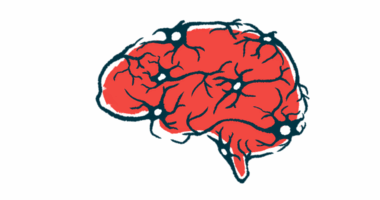Medical Marijuana and Parkinson’s: It’s Complicated

It is disappointing that medical marijuana is not among the first line of treatments a provider suggests for Parkinson’s disease, particularly when one is using federally sponsored medical services. But that is changing. It is a new world for medical marijuana, a treatment that both patients and providers are struggling to understand.
Providers must understand and navigate state and federal regulations both to protect patient safety and to avoid jeopardizing licensure. These regulations change every year as more and more states pass medical marijuana legislation.
However, the federal government has not legalized medical marijuana. This means that you can only obtain permission from a state to access a dispensary. The federal government also restricts people from bringing medical marijuana across state lines. It gets complicated.
I have been granted access to medical marijuana dispensaries in three states. Each time I had to complete an application, providing documentation of my Parkinson’s, and pay registration fees. In one state, I was interviewed by an addiction counselor to make sure that I wasn’t a drug addict.
Because I am unable to drive myself to the dispensary, my wife had to go through the same protocols to be recognized as a caretaker with product in the house. Is it worth it? If medical marijuana is used wisely, I think it is. But it’s complicated.
Over the past two decades (because of provider resistance to medical marijuana), mind-numbing pharmaceuticals have been prescribed for my pain. I rely on mindfulness and cognitive or behavioral techniques. I work at managing my pain daily and have found medical marijuana to be helpful. In conversations with providers, I am aboveboard regarding my choice of medical marijuana for pain management. I have yet to encounter a provider who didn’t think it was a good idea, although they couldn’t write that in my medical records. Just a nodding head, a wink of an eye, and the suggestion to “keep us informed.”
Based on my experiences with obtaining legal medical marijuana, I offer these tips for readers.
Check to see if your state supports legal medical marijuana dispensaries. Some states approve medical marijuana (36 states and four territories), and some approve recreational marijuana (17 states, plus Washington, D.C. and Guam). Buying marijuana outside of a dispensary can be expensive and, more importantly, cannot guarantee a consistent formulation. Buying marijuana in a state that supports neither recreational nor medical use is still illegal.
The process takes time. You will have a waiting period before your application for dispensary access is approved. You may be able to sample different formulations or products from a legal recreational marijuana site, but understand that what is available for recreational use may be different from what is offered for medical use.
Educate yourself about the different forms of medical marijuana. I cannot tolerate inhaled smoke, so I use a liquid vape inhaler during the day and a tincture in liquid form at night.
The combinations of the active ingredients of THC and CBD vary. You may be able to sample different formulations while you wait for medical use approval. The dispensary will probably offer a variety. Ask about different administrations (oral or inhalants) that can help with Parkinson’s symptoms. Finding out what works for you is part of the process.
The two plant varieties of marijuana, indica and sativa, are quite different. Sativa strains are generally uplifting and indica are more sedative. I’ve often tried different combinations to find what works for me.
A formula in one medical dispensary is often not available in another. Dispensaries are tied in the supply chain to specific growers, and because of government restrictions, growers cannot provide a standard product across state lines. Each time we moved, we had to go through the trial-and-error process and product experimentation. It was complicated and annoying.
Particular varieties of marijuana that offer both THC and CBD have been found to be useful for pain management in patients with Parkinson’s. This is the main reason I use it — but not to chase away the pain, like with alcohol or opioids, which just mask the pain. Instead, marijuana can be used as a window to sit with my pain in a new way.
I was hesitant to write this column because valid scientific research on marijuana for medical use is just starting. Federal laws make scientific research on the topic difficult (nearly impossible) in the U.S. But restrictions are loosening, funding from a regulated industry is more available, and so more research is being done.
It’s still a very new science and is developing all the time. But it’s getting less complicated.
***
Note: Parkinson’s News Today is strictly a news and information website about the disease. It does not provide medical advice, diagnosis or treatment. This content is not intended to be a substitute for professional medical advice, diagnosis, or treatment. Always seek the advice of your physician or another qualified health provider with any questions you may have regarding a medical condition. Never disregard professional medical advice or delay in seeking it because of something you have read on this website. The opinions expressed in this column are not those of Parkinson’s News Today or its parent company, Bionews, and are intended to spark discussion about issues pertaining to Parkinson’s disease.







Bruno Loff
I wonder if you have ever tried doing a long meditation retreat (e.g., 10 days), just focusing on improving your symptoms?
Dr. C
Hello Bruno ~ Thanks for the comment. I appreciate your reading my columns. My philosophy is to work every day on mindfulness and integrate that into my life. It helps to manage most of the worst of the PD symptoms, finding that quiet mind to reduce the worst aspects of PD. I believe strongly that we have to "show up" every day to make changes in our lives, even if it is just "one brick at a time".
Compassionate blessings, Dr. C.
Marina Cynthia Martin
Marijuana is legal in Canada, so I grow a bit of my own, and make a topical cream which helps almost immediately for knee pain
I also use mindfulness and relaxation techniques for pain and anxiety.
Have started to use the Buteyko method of breathing exs, meant for asthma but supposed to help in PD. Do you have any experience with this?